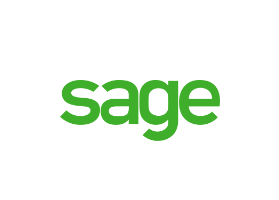We have recently seen a series of new measures although these mostly affect the retail and hospitality sectors. As we move into the summer holiday period, many of us find ourselves with greater uncertainty as the lockdown restrictions are slowly eased. Many businesses are beginning to look towards a post-pandemic world and to make plans for returning to some kind of normal, whatever that may be.
Amongst the dire predictions of downturn and recession, we see reasons for optimism – as always we are encouraged by the resourcefulness of businesses to look for new business opportunities and new ways of reaching customers.
This briefing note provides updates and commentary on the following issues:
- Hospitality, holiday accommodation and attractions sector
- Eat out to help out scheme
- Grants
- Job retention scheme
- Loan funding
- The new normal
- Self employed income support scheme
- Tax
- Brexit
- And finally
Hospitality, holiday accommodation and attractions: sector incentives
You will be aware that the government has recently announced a reduction of VAT to 5% for the hospitality/leisure sector. This measure started on 15 July and will end on 12 January 2021. Although large players in the sector have already adopted the reduction, we are yet to see to what extent these companies will pass on the VAT saving to their customers. Although it is presumed that the main purpose of the reduction is to stimulate demand, there is some concern that it will be used as an opportunity for businesses in the sector to increase profit margins and to rebuild reserves.
From our own experience, it is not yet clear to what extent small businesses in the sector will adopt the VAT reduction, primarily because the measure is relatively short-term and because of the cost and inconvenience of changing systems to deal with the reduction.
Further details of the changes can be found here: https://www.gov.uk/government/publications/reduced-rate-of-vat-for-hospitality-holiday-accommodation-and-attractions/information-on-the-reduced-rate-of-vat-for-hospitality-holiday-accommodation-and-attractions
Eat out to help out scheme
This scheme has received much publicity and is undoubtedly one of the more innovative schemes introduced by government in recent times.
Broadly speaking, the scheme runs from 3 to 31 August and enables diners to receive a discount of £10 per head for meals on Monday to Wednesday. There are restrictions: the discount only applies to food (not drinks), is actually set at 50% of the cost up to a maximum of £10, only applies to dining in, not takeaway and only applies to participating restaurants. On the plus side, there is no limit on the number of times you can eat on these days and no limit on the size of party.
The precise details are yet to be released. If you operate a restaurant, café or pub, check here for details of how to apply to participate: https://www.gov.uk/guidance/register-your-establishment-for-the-eat-out-to-help-out-scheme
Grants
Remember that the retail and hospitality sector grant still appears to be available. This grant is not available if you received the small business grant (£10,000), but a surprising range of businesses are eligible. Check your eligibility here: https://www.gov.uk/guidance/check-if-youre-eligible-for-the-coronavirus-retail-hospitality-and-leisure-grant-fund
Job retention scheme
The furlough scheme continues through to end of October, although the government subsidy is being tapered away before then, removing employers’ NI and pension contributions in August and reducing the grant to 70% of gross pay in September then to 60% in October.
Earlier this month the Chancellor announced the Job Retention Bonus. In essence, this means that any employer bringing back a previously furloughed employee to work, who then remains in continuous employment until 31 January 2021 will receive a one-off bonus of £1,000 per employee. The precise details of this scheme have not yet been announced but are expected by the end of July. We will provide further information when it is available.
From 1 July, employers were able to bring furloughed employees back to work for any amount of time and any shift pattern, while still being able to claim CJRS grant for the hours not worked. An employee’s working hours can be arranged in any way you wish – this could be a regular or specific period each day, or could be irregular hours depending on the business need.
Flexible furlough agreements can last any amount of time provided each arrangement is for a minimum of 7 calendar days. The guidance from HMRC states that you need a “new written agreement” to confirm the new furlough arrangement; this presumably also means you need a new written agreement each time there is a change in the arrangements. On a practical level, we understand that this means for example, that if you bring an employee back to work for, say, 2 hours per day, you need to maintain this for 7 days. You can then increase this to, say, 4 hours per day for seven days and so forth. Alternatively, we are seeing many companies bring staff back to work on a sharing basis, with one working Monday to Wednesday and the next working Wednesday to Friday.
If you do bring staff back to work on a part-time basis, you’ll need to work out how many hours each employee usually works and offset this from the number of hours they have been furloughed. Part of this process will be to decide if your employee works fixed or variable hours. If their pay depends on the number of hours they’ve worked, or they are not contracted to work a fixed number of hours, use the variable calculation.
You need to remember that the part-time furlough rules only apply to employees that you have previously successfully furloughed. This means they must have previously been furloughed for at least 3 consecutive weeks at some point between 1 March 2020 and 30 June. This does not mean that they had actually to be on furlough on 30 June, but do remember that if they were on furlough at that date, they must have first been furloughed no later than 10 June in order to qualify under the minimum three week rule.
As with the existing rules, employers are required to keep records of the furlough periods and the calculation of furlough pay. This will become even more important under the part-time arrangements.
You may be aware that calculation of furlough pay has presented a number of problems for employers. This has been most evident where an employee might be paid for overtime or commission. In these cases, when on furlough, the calculation of pay is based on the average for the year to 29 February 2020 including overtime, commission and any other contractual pay elements. For employees returning to work, it may be the case that they do not work overtime immediately upon their return, in which case their “working” pay will be less than their furloughed pay. There is no guidance from HMRC on how to deal with this, but we suspect many employers may choose to subsidise the working element of an employees pay. We are not employment advisers, but if you decide to do this, we recommend you make it clear that this is a discretionary action only applicable during the Covid crisis.
Another issue receiving more attention is annual leave. It is possible for staff to take annual leave whilst on furlough and as an employer you can request that you employees do so. This may be of interest to employers who will undoubtedly want to avoid furloughed staff returning to work, only to then take time off for scheduled leave. Remember to observe the terms of employment contracts and also remember that gross pay for any period of annual leave whilst on furlough must be paid at 100%, not the standard 80% furlough rate.
Finally, HMRC has recently issued guidance for specific circumstances in which a business can furlough individuals who are not employees. Eligible individuals include agency works, freelancers falling within the “off-payroll” rules (IR35) and company directors not on the payroll. The HMRC guidance can be found here: https://www.gov.uk/government/publications/individuals-you-can-claim-for-who-are-not-employees.
If you need further advice on any of these issues, please let us know.
Loan funding
There are still businesses that have not yet accessed this funding. As you will know, there are two types of loan: the Corona Business Interruption Loan Scheme (CBILS – usually pronounced “Cybils”) and the Bounce Back Loan Scheme (BBLS).
Both loans offer an initial 12 month capital and interest free period and preferential interest rates. CBILS funding starts at £50,001 up to a maximum of £2.5m and there is no set interest rate or term. BBLS lending is at 25% of turnover up to a maximum of £50,000 and is for a fixed term of 6 years (1 + 5) and a standard interest rate of 2.5%.
These arrangements are scheduled to end in November, which means there is no need to make an immediate decision. Even so, you should be evaluating your medium term cash flow requirements now; if you have any concern that you might need extra funding over the next 6 to 12 months, we strongly recommend you look at this sooner rather than later.
The new normal
Since the last update, we have seen retail, many hospitality businesses and the travel/holiday sector reopening. This is all very good news. However, we are also aware that many offices are not planning to reopen to staff until September and even then, it appears that occupancy will be well below pre-Covid levels with many staff continuing to work from home.
We have previously discussed the challenges faced by companies and their staff as a result of home working. We believe that the vast majority of businesses will have these challenges under review and will have suitable arrangements in place to ensure safe and efficient working. The wider impact of homeworking is yet to be seen, with some research suggesting loss of efficiency and other research suggesting that businesses are looking to reduce office space and to cut property costs. We believe that it is too early to predict longer term working patterns, not least because we ourselves are starting to realise that we prefer office-based working and appreciate the benefits that working face to face can bring. That said, we fully understand that there is no “one size fits all” solution, particularly for those businesses whose staff are reliant on public transport.
Moving on, you will be aware of the recent news that face masks will become mandatory in shops and retail spaces from this Friday (24 July). It falls outside the scope of this update to discuss the need for such a move, but whatever your personal views on the subject, this new requirement is indicative of the fact that as businesses, we need to take all reasonable steps to ensure the safety of customers and staff and that this obligation is likely to continue for the foreseeable future. On a more practical level, quite apart from the potential risks of non-compliance, it may be the case that businesses who do not appear to be doing “the right thing” will suffer future reputational damage, particularly if there is some risk of a second wave as we head towards the Autumn.
There is a great deal of guidance from government and other sources, so please do use the information available to establish proper procedures and guidelines to enable you to operate safely in these unusual times. The government guidance can be found here:
https://www.gov.uk/government/publications/guidance-to-employers-and-businesses-about-covid-19/guidance-for-employers-and-businesses-on-coronavirus-covid-19
We have previously noted our expectation that businesses will face increased cash flow pressure as they return to normal activity. It is therefore important to keep cash flow under constant review and to forecast forward as far as possible. Any potential shortfalls need to be identified as quickly as possible in order to take defensive action.
For many of us, lockdown presented unique challenges and, sadly, the prospect of a downturn in the economy means that yet more challenges may well arise over the next 6 to 9 months. We all need to be sure to keep performance and efficiency under review and, however unwelcome, difficult decisions may need to be taken and implemented. That said, we remain optimistic that small businesses have the flexibility and vision to rise to those challenges; as always, we are here to help and support you as far as we possibly can.
On a positive note, a recent survey suggested that businesses are now more optimistic about the prospect of growth than they were three months ago. Let us hope that this is a sign of things to come…
Self employed income support scheme
As a quick reminder, those of you that registered eligibility under the scheme should have received a payment in June. If your application was rejected by HMRC or you received less than you were expecting, please let us know and will check the position for you. There is an appeal process and we can help to deal with this.
It is now too late to apply for the first grant. However, a second grant will be available which can be applied for on or after 14 August. The second grant will work in exactly the same way as the first one, except that the grant will be 70% of average monthly trading profits (up to £6,570 in total). You will also need to certify that your business has been impacted by Covid on or after 14 July 2020.
We believe that you will be contacted by HMRC automatically. If you did not claim the first grant, this does not prevent you from making a claim for the second grant.
In recent days, HMRC have updated guidance about overpayments under the scheme and what penalties could apply if they believe deliberate action has lead to an incorrect payment. If you think you have received a grant in error, please let us know and we will check the position for you.
Tax
Tax remains a very hot topic for government, businesses and individuals. There appears to be a general view that taxes will need to rise at some point in the future although there is no consensus on how soon this will be and what form it will take. At the time of writing, it is looking likely that class 4 NIC (for self-employed traders) will be increased and other increases will be sure to follow. On the other side of the coin, there are calls to abolish capital gains tax and inheritance tax, although we remain doubtful that this is likely.
For now, thankfully, it seems that government is taking the pragmatic approach that the economy and businesses need to be supported and, in the short term at least, is ensuring that the tax system reflects this. What happens in the longer term remains to be seen.
We will, of course, keep you informed as to any significant changes.
Brexit
One major issue that has received very little attention in the media over the last few months is Brexit. We know that the UK government and the EC have been progressing talks about the post-transition arrangements that are expected to apply from 1 January 2021. The talks continue but we have seen guidance from HMRC on topics such as import and export of goods to the EU, which suggests to us that it will not be too long before we have a clearer idea of what to expect next year. We will update you further as guidance is issued.
And finally
We have previously highlighted the increase in fake HMRC emails circulating the internet. The golden rule is that HMRC do not generally communicate via email. The same applies to any government organisation or bank. If you are in any doubt, check the latest update from HMRC on the subject here: https://www.gov.uk/government/publications/genuine-hmrc-contact-and-recognising-phishing-emails
We gratefully digest all feedback and contributions and use these as part of our regular updates. Please do feel free to forward this to anyone who you think might benefit and do check out other information on https://acklandwebb.co.uk/blog/
We remain here to provide help and support as far as we can. If you need assistance or further guidance, please contact any one of the team.
As always, take care
DM
21.7.20





